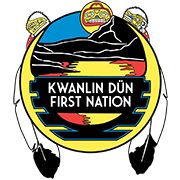The Heritage, Lands and Resource department will issue two main types of land interests, an allocation and a lease.
There will be two ways to apply for settlement land, a planned parcel disposition or a spot land application.
A planned parcel disposition is a lot in a planned development or a subdivision. The lots can be issued for residential, recreational, commercial, industrial use and will be offered through a lottery or tender process.
A spot land application is an application for a specific parcel of settlement land. The parcel is not part of a planned development and is offered through an individual application. Kwanlin Dün has over 350 spot land applications, called historical submissions from Beneficiaries and Citizens.
Processing historical submissions is the current priority of the Heritage, Lands and Resource department. All other applications will be on hold until the majority of the historical submissions are processed.
Historical Submissions
Historical submissions are existing land submissions by Kwanlin Dün Beneficiaries and Citizens for residential or traditional use of settlement land. They may also be known as
- land set aside;
- band council resolutions; or
- site specific selections.
In September, Kwanlin Dün Council passed a historical submissions policy, which directs the department to:
- prioritize historical submissions over all land applications;
- process historical submissions in chronological order based on when the submission was first made;
- give special consideration to historical submissions from Elders and those with urgent needs;
- prioritize residential historical submissions over traditional use; and
- process multiple historical submissions at once if they are in the same area.
The Heritage, Lands and Resource Department’s priority is to work with Beneficiaries and Citizens who are currently living on, or have a historical submission for land. Historical submissions will be processed in chronological order based on when the submission was first made.
Anyone currently living on settlement land or holding a historical submission should contact the department, by calling 867-633-7800 ext. 128 or emailing lands@kdfn.net.
Historical Submissions
Current Settlement Land Occupants
Settlement Land Availability
Historical Submissions Policy
Historical submissions are available as allocations or leases for residential or traditional use interests in land.
Residential
Residential land will be land used for homes, condos or apartments on subdivision, downtown or country residential lots.
A residential interest in land is available as an allocation or lease, and will have terms that require development.
Residential land within the City of Whitehorse will be subject to the Whitehorse Zoning Bylaw. Residential land outside the City will be subject to the terms in the KDFN Development Authorization Rule.
Traditional Use
KDFN Citizens and Beneficiaries can obtain an allocation of settlement land to use for traditional activities, such as cabins, hunting, and fishing.
HLR is responsible for monitoring what happens on settlement land in order to protect the environment, and the rights of Citizens and Beneficiaries to use the land.
When a person is granted a traditional allocation, they will sign an agreement with KDFN that outlines their responsibilities. They may use their allocation as outlined in their development authorization.
Guidelines for Traditional Allocations already in law
The KDFN Lands Act contains some guidelines for what can happen on traditional allocations:
- One traditional allocation per person, even if it’s shared with another person.
- You must go through an application process that includes public review.
- Minimum size is 0.4 hectares (about the size of the Potlatch House and parking lot).
- Land is not taxed until something is built that is categorized as taxable under YG legislation. If built, YG or the City will charge property taxes.
- Traditional allocations cannot be converted to a lease or sold to a non-KDFN person, but can be inherited by a KDFN Citizen or Beneficiary.
Proposed Guidelines
HLR is proposing additional guidelines for how traditional allocations can be used:
Permitted uses
- Cabin
- Outhouse
- Cache
- Tent frame
- Fish rack
- Equipment storage shed
- Solar panel, satellite dish, antennae, etc
Prohibited uses
- Anything hazardous or dangerous to the land and wildlife
- Anything resulting in nuisance, such as excessive traffic, noise, emissions, odour, smoke, etc
- Unregistered vehicles, except within enclosed buildings
- Signage over 2 square metres
Other guidelines
- Building set back from parcel boundaries: 5 metres
- Maximum height of structures: 7 metres
- Uses and buildings that exist before the allocation is granted can remain.
HLR asked KDFN Citizens and Beneficiaries how Traditional Allocations should be managed. A questionnaire was available in August and September 2024.
Read the Traditional Allocations Questionnaire Results.
Respondents had many questions about Traditional Allocations. Read the Traditional Allocations FAQs for answers.
To read the draft policy and rule, click on the links below. These documents have not been approved by KDFN Council.
Traditional Allocations Policy
Traditional Allocations Rules
Allocation
Allocations are a type of land interest available to Kwanlin Dün Beneficiaries and Citizens, 19 years of age or older, and are restricted to residential and traditional uses.
Allocation holders:
- have exclusive rights to their parcel of land;
- may transfer their allocation to other Kwanlin Dün Beneficiaries and Citizens with approval from Kwanlin Dün; and
- may change a residential allocation to a residential lease or a residential lease to an allocation with approval from Kwanlin Dün.
Each individual Beneficiary or Citizen may hold two allocations: one residential and one traditional use.
Lease
Leases are a type of land interest available to Kwanlin Dün Beneficiaries and Citizens, as well as the general public.
Settlement Land Allocation
Settlement Land Availability
For more information, please contact the Heritage, Lands and Resources department, at 867-633-7800 ext. 128 or lands@kdfn.net.
